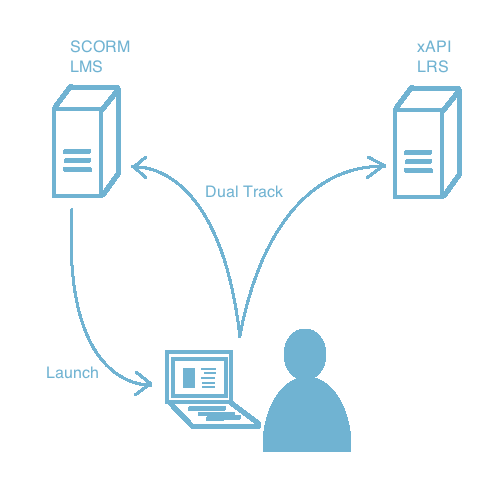Dual Tracking uses the existing SCORM infrastructure to deliver content and both SCORM and xAPI to record the learner's progress.
ADL recognizes that many organizations already have an e-Learning infrastructure in place. The costs in building up those systems, experience, and content makes it cost prohibitive to make a complete switch to xAPI. But the Experience API was designed with the understanding that the API may be part of a larger system, such as an enterprise LMS. Also, the xAPI is effective as a stand-alone system to collect, and provide access to, learner experiences without the coupling to content required by SCORM LMSs. This first approach of leveraging the xAPI understands that organizations have a dependence on an LMS and offers a low-impact solution to xAPI adoption, with benefits such as:


SCORM has been available for over 10 years. It is stable and has a large community. The reference model describes many aspects about progress reporting and learners' interactions within the content. But there is no defined behavior for accessing that data outside of the content. This means that consumers - students, teachers, administrators - are at the mercy of the LMS vendor to develop reports and tools for accessing the data. The Experience API was partially developed to address this omission in SCORM. By tracking to an xAPI LRS consumers can get access to relevant learner experiences. This makes possible:

Applying this approach to content development requires some steps to consider. The following are those steps and links to get started.